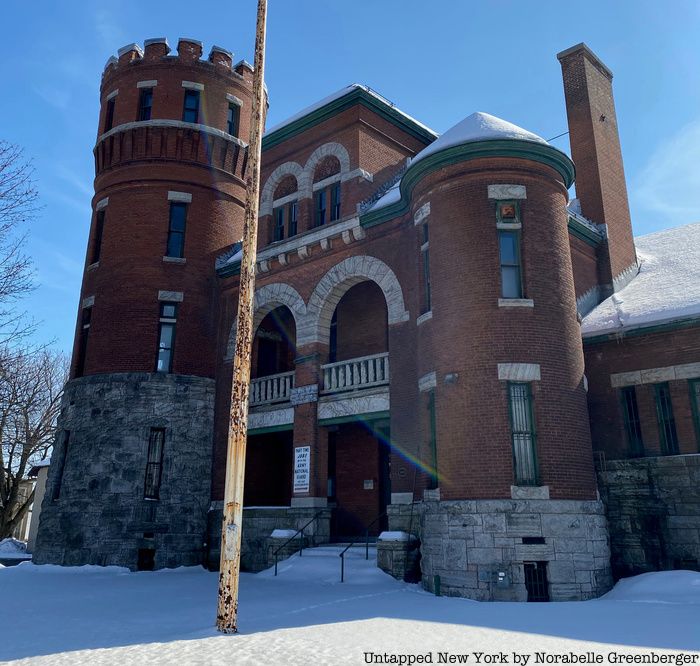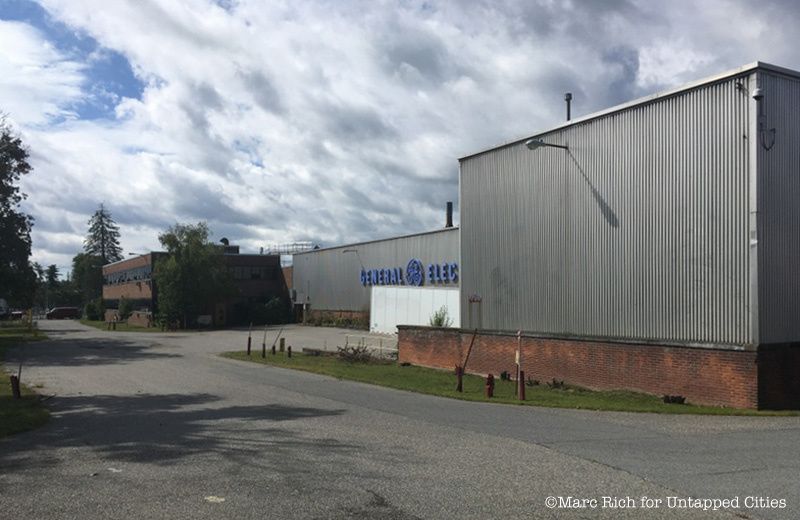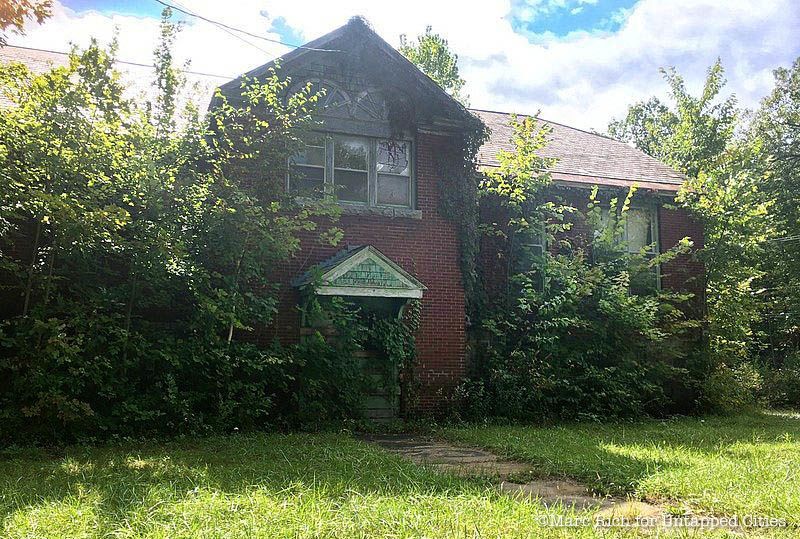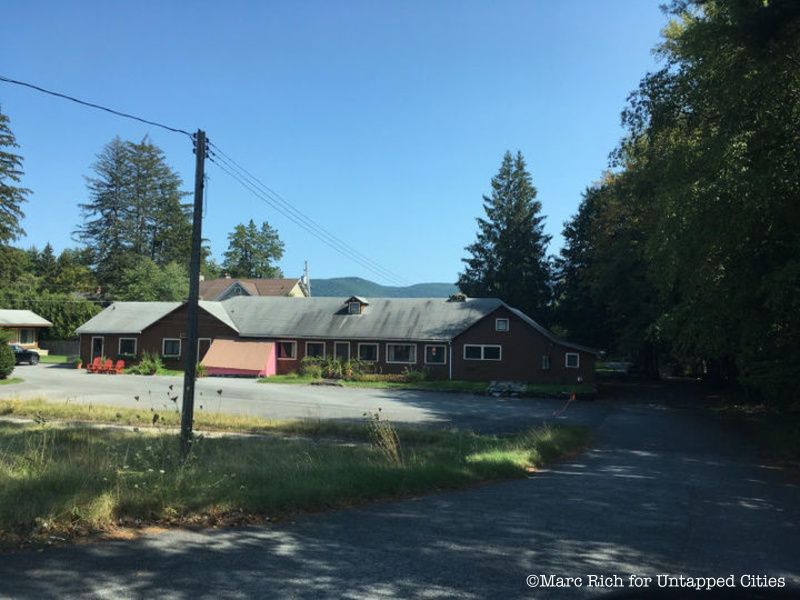Last Chance to Catch NYC's Holiday Notalgia Train
We met the voices of the NYC subway on our nostalgia ride this weekend!



Sometimes, city dwellers just need a break from the chaos of urban life in order to relax. Luckily, the state of New York is a vast, expansive region with tons of history and many places to visit. One of upstate’s most beautiful and most popular areas is Lake George.
Lake George is located approximately three-and-a-half hours north of New York City, stretching north through the Adirondack State Park. The lake and surrounding region played important roles in many of the earliest wars that took place on our nation’s soil, including The American Revolution and The French and Indian War.
With such an extensive history, the region expectantly has many abandoned buildings — even despite having a great track record for historic preservation and restoration.
Here are nine of the abandoned buildings in the region that haven’t yet been preserved:

Just above the very most northern tip of Lake George, on Lake Champlain, sit the remnants of Fort Crown Point. While the remains of the fort are technically abandoned, it is considered a historic site and is being preserved.
The area of Crown Point was long fought over even before The American Revolution. The French and British both disputed over the Champlain Valley, including the peninsula of Crown Point. The British began the construction of Fort Crown Point in 1759, after the capture of nearby Fort Carillon (the precursor to Fort Ticonderoga). Following their defeat in The American Revolution, The British abandoned the fort in 1777, after a brief two years where it was controlled by American colonists.
The only remaining structures from the original fort are the stone ruins of the fort’s two barracks, which are being preserved. A museum was constructed on the site to educate school groups and visitors. In addition, the site was deemed a National Historic Landmark in 1968.

Theme parks are some of the most popular tourist attractions around the world, and upstate New York has a rich history with recreational sites. It was home to the country’s first theme park, The Great Escape (formerly Storytown U.S.A.) in the village of Lake George.
Travel about 30 minutes north from the village and you will arrive in Schroon Lake, the location of the once popular theme park, Frontier Town.
In 1952, Staten Island’s Arthur Benson opened Frontier Town as a Wild West themed-park with both a Native-American and pioneer village. The park remained open until the mid-80’s, when a combination of problems caused a temporary shutdown. It later reopened and stayed operational until 1998, when it shut down permanently due to the diminishing interest in westerns.
The park has been abandoned ever since, leaving behind several “frontier” buildings, now overgrown by greenery.
 Image via Wikimedia: Eastern Washington D. White
Image via Wikimedia: Eastern Washington D. White
A little ways south of the village of Lake George sits Barkersville, the location of one of the state’s most haunted buildings.
The Saratoga County Homestead, or Homestead Sanitarium, opened in 1914 as a tuberculosis hospital. The original building was constructed with wood, but replaced with bricks in 1932. The hospital closed in 1960, but was reopened the following year as an infirmary before shuttering in 1979. The building has since been sold and remains unused.
The lucky few who have been granted access to visit the former hospital have claimed that the building is extremely haunted. Visitors have told stories of Homestead Sanitarium being occupied by former patients who had perished in the hospital.
While the brick building remains standing today, it’s listed as a private property, so permission is needed to actually visit.

Located south of Lake George in the town of Stillwater, the Saratoga Springs Air Force Station remains abandoned after it was utilized as a Cold War Air Force radar station from 1952-1977.
Originally named Schuylerville Air Force Station after a nearby town, the station was constructed in 1952 as an early warning radar site to defend the continental United States against enemy aerial attacks. The site remained active until its 656 Aircraft Control and Warning Squadron was inactivated in 1977.
Many of the station’s buildings remain standing today, but they’ve been weathered heavily by the environment. A marker sits at the bottom of the hill in dedication to the men and women of the 656th Aircraft Control and Warning Squadron who served there.

Victory Mills is a former textile mill located just north of the previously mentioned Saratoga Springs Air Force Station, in the small town of Victory, New York. Sections of the mill were constructed in 1890, but a majority of it was built 28 years later in 1918 by American Manufacturing Company. The building is five stories tall, has floors nearly an acre in size, and was initially utilized as a cotton mill before it was purchased in 1937 as a folding carton manufacturer.
Although the building has remained vacant since 2000, the green light was recently given to convert the site into an apartment complex.
In 2009, Victory Mills was listed on the National Register of Historic Places.

Closer to the village of Lake George, in Glens Falls, sits a former armory on Warren Street. The Glens Falls Armory was constructed in 1895 by Isaac G. Perry and is classified as a Romanesque Revival building. The 18th Separate Company was the armory’s first occupant, followed by the Company K 2nd Infantry Regiment in 1899, after their action during the Spanish-American War.
The armory has been vacant since 2009, when its National Guard unit moved to a neighboring town.
Today, the Glens Falls Armory still stands and was recently purchased by a nearby paper mill with potential to be used by its neighbor, The Hyde Collection art museum.

In the quaint, historical town of Fort Edward, a former General Electric plant has remained vacant since the company shut down the branch in 2013 after 70+ years in operation.
G.E. shifted its production of capacitors to a different facility in Florida as the Fort Edward branch was no longer being competitive. The company has expressed interest in seeking demolition permits, but local officials believe that the demolition of the former plant and the removal of the building from tax rolls would have a major impact on the surrounding area by cutting revenues to the local school districts.

Located just a bit off of the Hudson River, in the town of South Glens Falls, an old abandoned schoolhouse sits on the corner of Bluebird Road and Hudson Falls Road.
The small, two-story former schoolhouse — what locals call the Fennimore School — has sat on its corner for seemingly decades. Most recently, the brick building had been considered for purchase by a concrete company, even bearing a sign for the company on the back fence used to keep trespassers out. As of now, however, nothing has happened with the building.

With so many tourists each summer, Lake George has no shortage of hotels, resorts and restaurants, but many can’t attract enough people year round to survive.
Twin Bay Village is set on the eastern shore of the lake in the town of Bolton. Only recently closed, the motel/resort hasn’t deteriorated as much as one would expect an abandoned building to have. However, it’s definitely beginning to show signs of neglect. The expansive 37-acre property holds multiple vacant buildings, including marinas, a beach, a motel, and cabins.
The resort was actually put up for sale at a whopping $3.2 million due to location and development potential, and was listed as “sale pending.”
The Lake George area has so much more to offer than just fun, abandoned buildings. Many of the historically significant locations have thankfully been preserved, restored and/or repurposed as institutions to help engage the public.
Next, check out Photos: Inside NYC’s Abandoned Fort Wadsworth on Staten Island, or Inside NYC’s Abandoned Paramount Theater on Staten Island. Get in touch with the author on Instagram @mjohnathonrich.
Subscribe to our newsletter